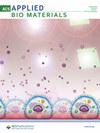Artificial intelligence’s impact on breast cancer pathology: a literature review
IF 4.6
Q2 MATERIALS SCIENCE, BIOMATERIALS
引用次数: 0
Abstract
This review discusses the profound impact of artificial intelligence (AI) on breast cancer (BC) diagnosis and management within the field of pathology. It examines the various applications of AI across diverse aspects of BC pathology, highlighting key findings from multiple studies. Integrating AI into routine pathology practice stands to improve diagnostic accuracy, thereby contributing to reducing avoidable errors. Additionally, AI has excelled in identifying invasive breast tumors and lymph node metastasis through its capacity to process large whole-slide images adeptly. Adaptive sampling techniques and powerful convolutional neural networks mark these achievements. The evaluation of hormonal status, which is imperative for BC treatment choices, has also been enhanced by AI quantitative analysis, aiding interobserver concordance and reliability. Breast cancer grading and mitotic count evaluation also benefit from AI intervention. AI-based frameworks effectively classify breast carcinomas, even for moderately graded cases that traditional methods struggle with. Moreover, AI-assisted mitotic figures quantification surpasses manual counting in precision and sensitivity, fostering improved prognosis. The assessment of tumor-infiltrating lymphocytes in triple-negative breast cancer using AI yields insights into patient survival prognosis. Furthermore, AI-powered predictions of neoadjuvant chemotherapy response demonstrate potential for streamlining treatment strategies. Addressing limitations, such as preanalytical variables, annotation demands, and differentiation challenges, is pivotal for realizing AI’s full potential in BC pathology. Despite the existing hurdles, AI’s multifaceted contributions to BC pathology hold great promise, providing enhanced accuracy, efficiency, and standardization. Continued research and innovation are crucial for overcoming obstacles and fully harnessing AI’s transformative capabilities in breast cancer diagnosis and assessment.人工智能对乳腺癌病理学的影响:文献综述
本综述讨论了人工智能(AI)在病理学领域对乳腺癌(BC)诊断和管理的深远影响。它探讨了人工智能在乳腺癌病理学不同方面的各种应用,重点介绍了多项研究的主要发现。将人工智能融入常规病理学实践可提高诊断准确性,从而有助于减少可避免的错误。此外,人工智能还能熟练处理大型全切片图像,在识别浸润性乳腺肿瘤和淋巴结转移方面表现出色。自适应采样技术和强大的卷积神经网络标志着这些成就。人工智能定量分析还增强了对激素状态的评估,这对选择乳腺癌治疗方法至关重要,有助于提高观察者之间的一致性和可靠性。乳腺癌分级和有丝分裂计数评估也受益于人工智能的干预。基于人工智能的框架能有效地对乳腺癌进行分级,即使是传统方法难以处理的中度分级病例也不例外。此外,人工智能辅助的有丝分裂数字量化在精确度和灵敏度上都超过了人工计数,有助于改善预后。利用人工智能评估三阴性乳腺癌中的肿瘤浸润淋巴细胞,可以深入了解患者的生存预后。此外,人工智能对新辅助化疗反应的预测也证明了简化治疗策略的潜力。解决分析前变量、注释要求和分化挑战等限制因素,是充分发挥人工智能在碱性细胞病理学中的潜力的关键。尽管存在障碍,但人工智能对 BC 病理学的多方面贡献前景广阔,可提高准确性、效率和标准化程度。要克服障碍并充分利用人工智能在乳腺癌诊断和评估中的变革能力,持续的研究和创新至关重要。
本文章由计算机程序翻译,如有差异,请以英文原文为准。
求助全文
约1分钟内获得全文
求助全文

 求助内容:
求助内容: 应助结果提醒方式:
应助结果提醒方式:


